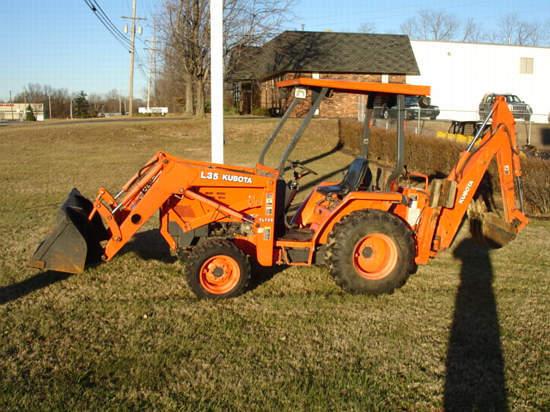We genuinely care about
our customers' satisfaction
C&B Drainage Systems
Call Us At: 803-806-8453 Columbia
803-530-9868 Cell
In loving memory of Claude "Big Daddy" and Sybil "Big Mama" Dreher
What is it?
Your septic systen is an onsite wastewater treatment system that processes and purifies household waste. It consists of two main parts:
1. The tank itself, commonly a precast concrete unit. Tanks dating back before the early 1970's were often constructed on site with cement blocks
2. The drain field, also called the absorption trench, nitrification line or leach field.
What does it do?
Your septic system treats household wastewater and returns it to the soil rather than to a large sewage treatment plant which discharges treated waste into a river.
How does it work?
Solid particles in the wastewater settle to the bottom of the septic tank. This accumulation should be pumped out every four to six years or before the system shows signs of problems. The clear liquid, still highly polluted, enters the drain field where natural processes in the soil purify and filter it. A properly working septic system relies on the soil to absorb the water run-off from the tank.
How do I know if I have one?
If you're not sure, a County Health Department reresentative will be glad to help. You can also contact us, we can help you as well. In fact we will glady perform a complete septic system inspection, in many cases free of charge.
Where is it located?
Your septic tank is usually buried about a foot under ground outside the downstairs bathroom. Knowing where your tank is located can help avoid drive-over accidents. We can help you find your tank by using a probing rod, taking care to avoid damaging the tank or underground utilities.
How do I know if it is working properly?
A failing system has several noticeable symptons:
1. Damp, mushy ground above the drain field, expecially in rainy weather.
2. Standing water with an oily film or dark color than seems to never dry out.
3. A foul malodor, smelling like "rotten eggs".
4. Household plumbing fixtures that back up or don't drain properly.
What causes it to fail?
A system usually fails because it is overloaded with more water than the soil can absorb, or because the tiny openings in the soil have become clogged with solid particles from the septic tank. If solids have clogged the soil pores, pumping out the septic tank will not restore the system. The most likely solution will be installing a new leach field in a different area, which is expensive and disruptive to your property.
What are the consequences of a failing system?
1. Inconvenience and expense to the home owner.
2. Health hazard of raw sewage on the ground.
3. Polution of streams and lakes.
4. Well water contamination.
What if my system is already showing signs of failure?
The best and cheapest solution is proper care and maintenance by you. If you feel concerned in any way, make an appointmet with us for a complete septic system evaluation. In many cases, it's free!
Inside your septic tank:
Toilet water is termed "black water". Water coming from showers, sinks, and laundry is called "grey" water. Food particles, lint, grease, paper, and feces that initially floats on the surface is "floating scum". Solids that have settled to the bottom of the tank is called "sludge". About 95 percent of the sludge and scum that is in your septic tank is broken down by bacteria. The other 5 percent remains in the tank and builds up in the sludge layer. Consequently, your septic tank must be pumped out regularly. Otherwise, solids would eventually fill the tank and wash out into the leachfield. This is detrimental to the overall health and longevity of your septic system.
Important Tips For Simple Septic Tank Maintenance
1. Limit the use of your garbage grinder. Too many solids will clog the soil and may cause your system to overflow. Using a garbage disposal typically doubles the
rate of solids build-up in the septic tank.
2. Remember that a septic system uses natural biological processes, so only bio-degradable waste should go into it.
- No cigarette butts, heavy tissues, sanitary napkins, disposable diapers, catbox litter, coffee grounds, or
cotton swabs.
- No paints, oils, chemical drain cleaners, thinners, solvents, poisons, or pesticides. These toxic chemicals not only kill helpful bacteria, they may also contaminate
the ground water
-No grease or cooking oils. Grease may harden in the septic tank's scum layer and build up until it blocks the inlet or outlet (see above photos).
3. Keep a copy of your septic tank approval, you will be able to locate the tank and drain field for any scheduled maintenance or future repairs.
4. Don't allow heavy vehicles to drive over the tank or drainfield because this could crush the pipes or cave in the septic tank. (It happens a lot.) Don't dig in the
leach field or build anything over it. Don't cover any part of the septic system with concrete or asphalt.
5. Have your septic tank pumped of accumulation. Don't wait for your system to fail. Preventative maintenance is cheaper than repair!
6. Provide adequate surface drainage away from the septic drain field. Divert downspouts, roof drainage, driveway runoff, and sump pump discharge away from the
leach field. Landscape your yard so that natural run-off will not flow over the drainage area.
7. Avoid a large number of trees or shrubbery which may cause clogging of the system by roots growing into the lines. Grow grass or gound cover over the septic
system to prevent erosion.
8. Conserve water. Don't allow leaking faucets or toilets to go unchecked. Inexpensive water-saving devices can be purchased at most plumbing and hardware stores.
Large volumes of water over a short period of time will flush untreated solids out of the septic tank into the leachfield. Space out heavy water-using activities such as
washing clothes and taking showers. Consider replacing old toilets that use 3.5 to 5 gallons per flush with new 1.6 gallon fixtures.
9. Go easy with household chemicals. Disinfectants, ammonia, bathroom cleaners, bleach,etc. is harmful to the bacteria your system needs in order to operate
properly. Space out use of these products to allow the system time to dilute and neutralize them a little at a time.
Here we have the current blue ribbon award winner for the nastiest septic tank. The photos are of the floating scum layer. On the left is a good example of how grease and other solids can clog your septic system. On the right you are viewing the side and back walls of the tank leading to the drain (leach) field. Needless to say, this tank sorely needs pumping!
Floating scum this thick must be broken up before it can be pumped. Here the service technician is using a long handled hoe to do the job.
Below and to the right are views of the sludge layer being back-washed and pumped away.
Here the tank has been thouroughly pumped, and the contents (septage) is on its way to a DHEC certified treatment facility.
A septic system may be out of sight, but it definitely should not be out of mind. Most problems with septic systems are due to lack of proper care. With a little attention, your septic system can be a valuable asset to your property. It all comes down to knowing where your system is, protecting it from internal and external problems, giving it regular maintenance, and calling a professional septic contractor when you need help.
We at C&B Drainage do not recommmend the use of additives that claim to boost the bacteria count or extend septic system life. Bacteria are already present by the billions.There are enzyme-based products available that claim to break-down lipo-proteins, cellulose, gums, and pectins that may actually have some benefit. But remember controlling what goes down your drains will have a greater positive effect on your septic system than any additive. There is no additive that eliminates the need for periodic pumping!
Now you are an informed septic system operator
If you have a question concerning any of our septic, plumbing, or moisture control services please call me: Chris Nance 803-806-8453 Columbia - 803-438-6130 Camden - 803-530-9868 cell Or fill out your contact information in the box provided with your specific request.


